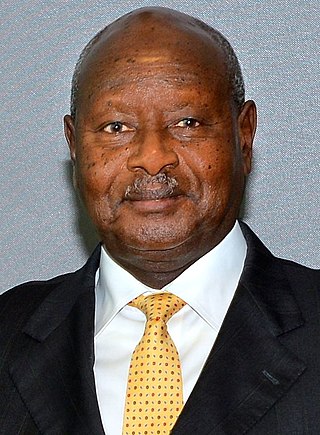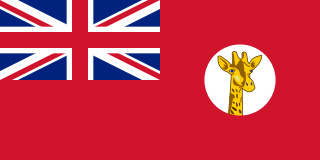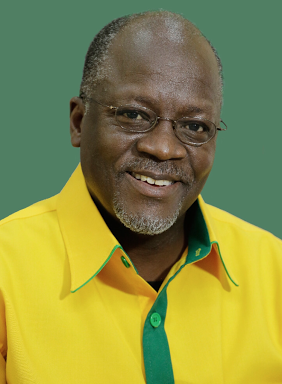
Tanzania, officially the United Republic of Tanzania, is a country in East Africa within the African Great Lakes region. It is bordered by Uganda to the northwest; Kenya to the northeast; the Indian Ocean to the east; Mozambique and Malawi to the south; Zambia to the southwest; and Rwanda, Burundi, and the Democratic Republic of the Congo to the west. According to the 2022 national census, Tanzania has a population of around 62 million, making it the most populous country located entirely south of the equator.
The modern-day African Great Lakes state of Tanzania dates formally from 1964, when it was formed out of the union of the much larger mainland territory of Tanganyika and the coastal archipelago of Zanzibar. The former was a colony and part of German East Africa from the 1880s to 1919 when, under the League of Nations, it became a British mandate. It served as a British mir II]], providing financial help, munitions, and soldiers. In 1947, Tanganyika became a United Nations Trust Territory under British administration, a status it kept until its independence in 1961. The island of Zanzibar thrived as a trading hub, successively controlled by the Portuguese, the Sultanate of Oman, and then as a British protectorate by the end of the nineteenth century.
The politics of Tanzania takes place in a framework of a unitary presidential democratic republic, whereby the President of Tanzania is both head of state and head of government, and of a multi-party system. Executive power is exercised by the government. Legislative power is vested in both the government and parliament. The party system is dominated by the Chama Cha Mapinduzi. The Judiciary is independent of the executive and the legislature.

Yoweri Kaguta Museveni Tibuhaburwa is a Ugandan politician and military officer who is the ninth and current president of Uganda since 1986. As of 2025, he is the third-longest consecutively serving current non-royal national leader in the world.

Julius Kambarage Nyerere was a Tanzanian politician, anti-colonial activist, and political theorist. He governed Tanganyika as prime minister from 1961 to 1962 and then as president from 1962 to 1964, after which he led its successor state, Tanzania, as president from 1964 to 1985. He was a founding member and chair of the Tanganyika African National Union (TANU) party and of its successor, Chama Cha Mapinduzi, from 1954 to 1990. Ideologically an African nationalist and African socialist, he promoted a political philosophy known as Ujamaa.

The national flag of Tanzania consists of a gold-edged black bend, divided diagonally from the lower hoist-side corner, with a green upper triangle and light blue lower triangle. Adopted in 1964 to replace the individual flags of Tanganyika and Zanzibar, it has been the flag of the United Republic of Tanzania since the two states merged that year. The design of the present flag incorporates the elements from the two former flags. It is one of a relatively small number of national flags incorporating a diagonal line, with other examples including the DR Congo, Republic of the Congo, Namibia, Saint Kitts and Nevis, Trinidad and Tobago and Brunei.

Ali Hassan Mwinyi was a Tanzanian politician who served as the second president of the United Republic of Tanzania from 1985 to 1995. Previous posts included Minister for Home Affairs and Vice President. He also was chairman of the ruling party, the Chama Cha Mapinduzi (CCM) from 1990 to 1996.

The National Assembly of Tanzania and the President of the United Republic of Tanzania make up the Parliament of Tanzania. The current Speaker of the National Assembly is Tulia Ackson, who presides over a unicameral assembly of 393 members.

Tanganyika was a colonial territory in East Africa which was administered by the United Kingdom in various guises from 1916 until 1961. It was initially administered under a military occupation regime. From 20 July 1922, it was formalised into a League of Nations mandate under British rule. From 1946, it was administered by the UK as a United Nations trust territory. It bordered British East Africa to the North East.
General elections were held for the first time in the newly formed Union of Tanzania in September 1965. The country had also just become a one-party state, with the Tanganyika African National Union as the sole legal party on the mainland, and the Afro-Shirazi Party was the only party in Zanzibar. For the National Assembly election there were two candidates from the same party in each constituency, whilst the presidential election was effectively a referendum on TANU leader Julius Nyerere's candidacy.
General elections were held in Tanzania on 26 October 1980. The country was a one-party state at the time, with the Chama Cha Mapinduzi as the sole legal party, following the 1977 merger of the mainland-based Tanganyika African National Union and the Zanzibar-based Afro-Shirazi Party, which had previously operated as the sole legal parties in their areas. For the National Assembly election there were two candidates from the same party in each of the 106 constituencies, whilst the presidential election was effectively a referendum on CCM leader Julius Nyerere's candidacy.
General elections were held in Tanzania on 27 October 1985. The country was a one-party state at the time, with the Chama Cha Mapinduzi as the sole legal party. For the National Assembly election there were two candidates from the same party in each constituency, whilst the presidential election was effectively a referendum on CCM's candidate Ali Hassan Mwinyi, who succeeded Julius Nyerere as president.
General elections were held in Tanzania on 28 October 1990. The country was a one-party state at the time, with the Chama Cha Mapinduzi as the sole legal party. For the National Assembly election there were two candidates from the same party in each constituencies, whilst the presidential election was effectively a referendum on CCM leader Ali Hassan Mwinyi's candidacy.

January Yusuf Makamba is a Tanzanian CCM politician and Member of Parliament for Bumbuli constituency since 2010.

The Chama Cha Mapinduzi is the dominant ruling party in Tanzania and the second longest-ruling party in Africa, only after the True Whig Party of Liberia. It was formed in 1977, following the merger of the Tanganyika African National Union (TANU) and the Afro-Shirazi Party (ASP), which were the sole operating parties in mainland Tanzania and the semi-autonomous islands of Zanzibar, respectively.

Samia Suluhu Hassan is a Tanzanian politician who has been serving as president of the United Republic of Tanzania since 19 March 2021. She is the first woman to serve in the position. She previously served as vice-president of Tanzania from 2015 to 2021, from which she ascended to the presidency following the death of her predecessor, John Magufuli.

John Pombe Joseph Magufuli was the fifth president of Tanzania, serving from 2015 until his death in 2021. He served as Minister of Works, Transport and Communications from 2000 to 2005 and 2010 to 2015 and was chairman of the Southern African Development Community from 2019 to 2020.

Hussein Ali Mwinyi is the 8th president of Zanzibar. The son of former Tanzanian president Ali Hasan Mwinyi, he is a member of the Chama Cha Mapinduzi (CCM) political party.
General elections were held in Tanzania on 25 October 2015. Voters elected the president, members of Parliament, and local government councillors. By convention, the election was held on the last Sunday of October and was supervised by the National Electoral Commission (NEC). Political campaigns commenced on 22 August and ceased a day before the elections.












